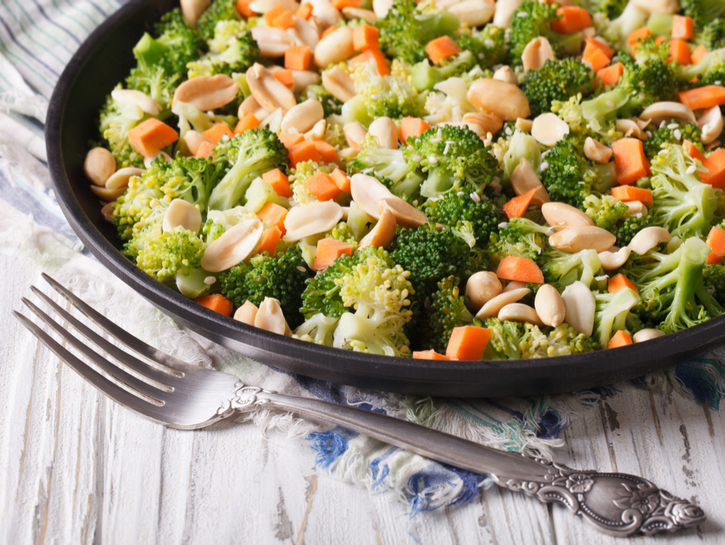The flexitarian diet is an eating plan that relies mostly on plant-based foods, while still incorporating a small amount of meat and fish into the schedule. It’s commonly used for people who are adjusting their diets to be fully vegetarian or vegan by decreasing their meat intake bit by bit. The diet was coined in 2009 in dietitian Dawn Jackson Blatner’s book The Flexitarian Diet: The Mostly Vegetarian Way to Lose Weight, Be Healthier, Prevent Disease, and Add Years to Your Life. Blatner argues that you don’t need to go fully meat free to reap the benefits of a vegetarian diet.
What Do You Eat On A Flexitarian Diet?
Someone practicing the flexitarian diet relies on plant-based foods as the main staple of their diet. Flexitarians eat a wide variety of non-meat products, including leafy greens, quinoa, tofu, grains and fruits. But unlike vegetarian diets, flexitarians still consume animal products and meats, just on a small scale. Typically, the ratio for plant-to-meat-based-foods for typical flexitarians is 80 percent vegetarian dishes to 20 percent meat dishes. As the diet progresses, many people tend to slowly reduce the amount of meat until it’s eliminated completely and they become vegetarian.

Elena Shashkina/Shutterstock
How Often Should Meat Be Consumed?
The amount of meat that someone practicing this diet should consume depends on the person. Like the name of the diet suggests, this eating plan is flexible and if you are practicing it, you don’t have a strict regimen to stick to. Some flexitarians are practicing vegetarians during the week, but will incorporate meat into their diet on the weekends, while some only eat meat one day a week.
The type of meat consumed on this diet is also flexible. Some flexitarians might only eat poultry and fish and avoid red meats. Some might stick to free-range meats. Others might munch on bacon or cut into a tender, juicy steak every once in a while, although those options are not as healthy.

Irina Rostokina/Shutterstock
What Are The Health Benefits Of the Flexitarian Diet?
So why should you choose the flexitarian diet over other diets? Again, this eating plan is a popular choice for people moving into the realm of vegetarianism, but that is not the only appeal for flexitarianism. U.S. News and World Report tested 40 popular diets and ranked the flexitarian eating plan third best overall diet because of its ease to follow and wide range of health benefits.
Weight loss
People on the flexitarian diet are likely to lose weight. Vegetarians are more likely to have a lower body mass index than non-vegetarians, and because the flexitarian diet promotes a more vegetarian lifestyle, those who stick to their meal plans and eat a small amount of meat tend to lose weight, especially if they eat healthier meats. The flexitarian diet is ranked fifth for best weight-loss diets.

Ann Haritonenko/Shutterstock
Lowering Risks Of Illnesses
The flexitarian diet reduces the risk of illnesses such as heart disease and diabetes. There is also evidence to suggest that flexitarians, along with vegetarians and vegans, will have longer lifespans than people who regularly consume meat.
Nutrients
Plant-based foods are nutrient-dense, meaning they yield high amounts of vitamins and minerals. By reducing the amount of meat in their diet, flexitarians receive most nutrients such as protein elsewhere, including soy products, beans and greens such as peas, broccoli and kale.
